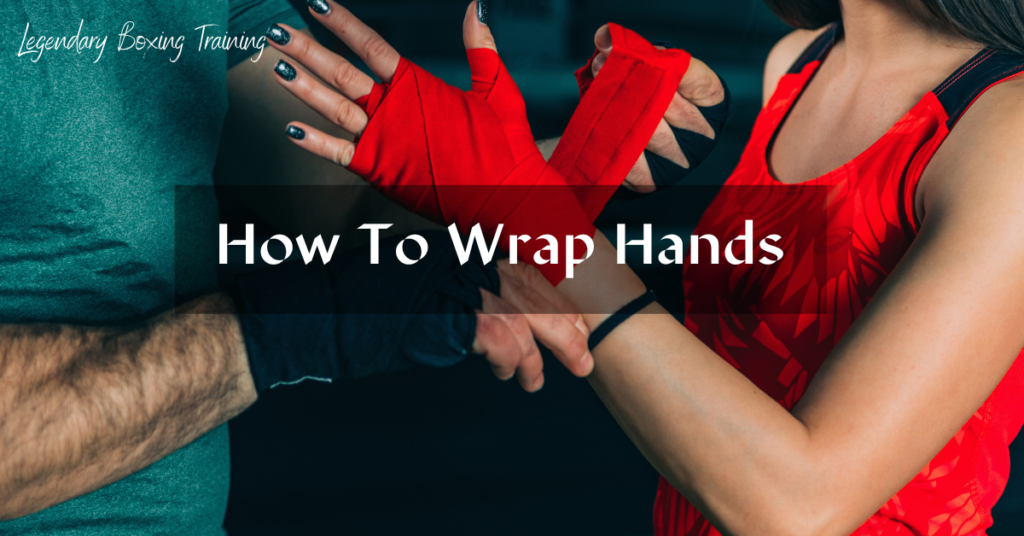Boxing is a great way to get in shape and have some fun. But it can be dangerous if you don’t wrap your hands properly. Knowing how to wrap your hands correctly is essential for any boxer, whether you’re a beginner or a professional. Wrapping your hands correctly provides support and protection against injuries, so it’s important to learn the right technique. In this article, we’ll guide you through the steps of wrapping your hands for boxing and explain why it’s so important. With these tips, you’ll be able to keep yourself safe while enjoying the sport of boxing!
Overview Of Hand Wrapping
Wrapping your hands is an essential part of boxing. It helps protect your hands and wrists while you train, spar and compete. Wrapping your hands also provides support to prevent injury. To properly wrap your hands, there are a few steps that need to be followed.
The first step is to make sure you have the right materials: hand wraps, gauze, tape, and gloves. Hand wraps come in different lengths, so it’s important to select the appropriate size for your body type. Gauze should be folded into several layers for extra protection and stability. Tape should also be applied around the wrist for added support. Finally, gloves should fit snugly around both hands without restricting movement or affecting grip strength.
Once all the materials have been gathered, it’s time to wrap the hands correctly. This will ensure that they are well-protected during training sessions and fights. Up next is a section on materials needed for wrapping your hands – let’s get started!
Materials Needed For Wrapping
Wrapping your hands correctly is an essential part of boxing. It requires the proper materials and preparation to ensure that you are adequately protected from injury. Here’s what you need:
- Hand wraps
- Boxing gloves
- Tape
- Vaseline
- Gauze
The most important item, hand wraps, should be at least 180 inches in length to protect the entire hand and wrist. Boxing gloves should be chosen based on their weight and size, as well as padding for protection against impact. Tape is used to secure the wrap onto the hand once it has been wrapped properly, while Vaseline helps prevent friction between the skin and tape. Finally, gauze can be used to create a cushion around knuckles before placing gloves on top of them. All these items are necessary for proper wrapping of your hands when preparing for a match or training session. With this knowledge in hand, it’s time to start prepping for wrapping!
Preparation For Wrapping
Now that you have all the materials needed for wrapping, it’s time to prepare. Before beginning, make sure your hands are clean and dry. You’ll also want to remove any jewelry or watches so they don’t get in the way.
Next, sit in a comfortable chair and begin by stretching your wrists and fingers. This will help loosen up your muscles and ensure that the wraps fit properly. Make sure to stretch both arms evenly for about a minute each.
When you’re done stretching, it’s time to get started on the actual wrapping process. Now that you’ve prepped, you’re ready to move onto step-by-step instructions on how to wrap your hands.
Step-By-Step Instructions
Wrapping your hands for boxing is an essential part of the sport, with fighter’s wrapping their hands before every fight. According to the National Federation of Professional Trainers, 76% of all fighters wrap their own hands. Knowing how to wrap your hands properly can prevent injury and keep you safe while punching.
Here are some step-by-step instructions for how to wrap your hands:
- Start by making sure your knuckles are covered by wraps. This will help minimize the risk of injury.
- Wrap each finger individually, starting with the pinky and working up towards the thumb. Be sure to leave a gap between each finger so that they can move freely.
- Wrap around the wrist in a figure 8 motion, making sure to keep it tight but not too tight so that blood flow isn’t restricted.
- Apply tape over the wraps on top of the wrist and thumb, ensuring that everything is secure and won’t come undone during training or competition.
- Finally, slide on a pair of gloves to complete the process and you’re ready for action!
Tips for proper wrapping techniques include using cloth or cotton wraps instead of gauze as these provide more support and cushioning around vulnerable joints; using medical tape instead of regular tape which provides better protection; and ensuring that everything is snug but not too tight in order to avoid any issues with circulation or movement range.
Tips For Proper Wrapping Techniques
When wrapping your hands for boxing, the techniques you use are essential to protecting your wrists and knuckles. To ensure that your wrapping is effective, there are some important tips to consider when wrapping your hands.
First, always start with a clean hand wrap. Make sure it’s dry before you begin, as a wet wrap can cause friction and discomfort when punching. Second, make sure the wrap is applied tightly but not too tight. This will give you optimal protection without restricting blood flow or causing pain. Finally, be sure to double-wrap each knuckle and wrist joint to provide extra support where it’s needed most.
By following these tips for proper hand wrapping techniques, you can help ensure that your hands are well protected for boxing sessions. Doing so will also help reduce the risk of injury during training and competition, allowing you to stay in fighting shape for longer periods of time. With this foundation laid down, we can now move on and explore the benefits of properly wrapping up a boxer’s hands.
Benefits Of Hand Wrapping
Hand wrapping has many benefits for boxers. It helps provide support to the wrist and knuckles, prevents slipping during training or competition, and can help reduce the risk of injury.
Here are some key benefits:
- Hand wrapping provides added support to the wrist and knuckles by cushioning them against impact.
- The wrap will also prevent your hands from slipping during boxing, allowing you to maintain a solid grip on the handle of the bag or pads while sparring.
- Wrapping your hands also helps reduce potential injuries such as strained muscles, lacerations, and fractures.
- Additionally, it provides an extra layer of protection between your skin and any gloves you may be wearing.
Wrapping your hands is an important part of boxing that can provide numerous advantages both in terms of safety and performance. With these protective measures in place, you can rest assured knowing that your hands are properly supported during boxing sessions. To keep up with proper aftercare and maintenance for hand wraps, read on.
Aftercare And Maintenance
Once you’ve completed wrapping your hands, it’s important to take proper care of them. Keeping your wraps clean is essential for avoiding infection and discomfort. After each use, wash the wraps in cold water with a mild detergent, air dry them, and store them in a cool, dry place. It’s also important to regularly inspect your wraps for any signs of wear and tear, such as fraying or stretching. If they show any signs of damage, replace them immediately.
When caring for skin on your hands, make sure to keep it moisturized with a gentle lotion or cream that won’t irritate the skin. This will help prevent splits and cracks in the skin and reduce the chances of infection. Additionally, if you notice any redness or swelling after wrapping your hands, remove the wraps and apply an ice pack to reduce inflammation.
Taking good care of your hands will ensure that they stay healthy and ready for use in future training sessions. Regularly cleaning and inspecting your wraps, moisturizing the skin on your hands, and reducing inflammation can help keep both you and your equipment safe from harm during exercise.
Conclusion
In conclusion, if you’re a boxer who wants to get the most out of their workouts and protect their hands from injury, learning how to properly wrap your hands is essential. It takes time to learn the correct technique and practice makes perfect. Having the right materials on hand and taking the time to prepare for wrapping your hands will make it easier. With patience and dedication, you can become an expert at wrapping your hands in no time.
I remember when I first started boxing, I had no idea how to wrap my hands. But with some practice and help from my coach, I quickly learned how to do it properly. In addition to protecting my wrists, knuckles and thumbs, I felt more confident in my abilities as a boxer after wrapping my hands before each workout session.
Hand wrapping is not only beneficial for boxers but for anyone who is looking for added protection during physical activities or sports. Investing in the right materials for proper hand wrapping and learning the best techniques will provide long-term benefits that will pay off in the end.




